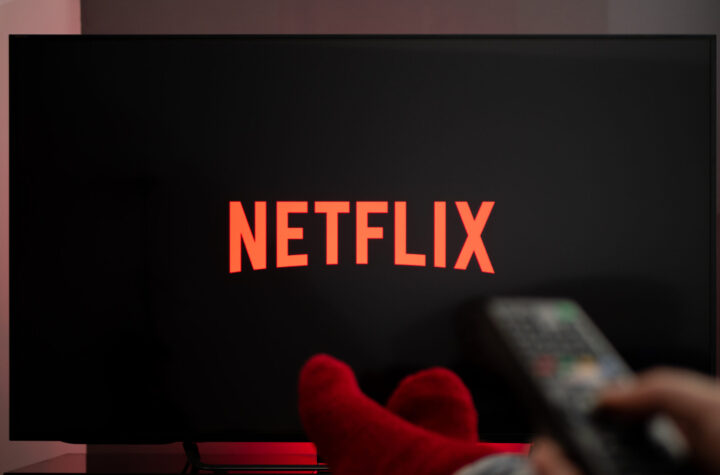Migraine sufferers around the world should be cheering this week as Eli Lilly won American marketing approval for its new migraine drug, Emgality. This drug has been shown to greatly reduce “migraine days per month,” or days in which a patient suffers a headache severe enough that his or her daily activities become impaired. The drug works by targeting a protein known as CGRP. This is the third drug this year that the FDA has approved that targets this same protein. So the great news is that, not only has help arrived for millions of migraine patients, but lots of help has arrived. The fact that three drugs have been approved, all of which target the same protein, all of which have demonstrated comparable efficacy, should mean that the three drugs will have to compete on price, to the benefit of patients. Right?
Or not. Biopharmadive.com reports that, “Lilly priced Emgality at a wholesale cost of $6,900 per year, matching the price points set first by Amgen and then Teva for their respective drugs. With roughly similar clinical profiles between the three, the focus now shifts to how insurers will respond.” Lilly has seen this movie before, and they know a few tricks to keep prices high, competition be damned. The great news is that high prices have incentivized three different pharma companies to create a medicine that will help millions of desperate people. The bad news is that the abnormal distortion of pharmaceutical markets in America may well mean that patients, and taxpayers, and everyone else, get screwed. The outcome is somewhere in between for us Pharma investors.
Sugar Ain’t Always Sweet
While scientists have struggled to no avail to remedy migraine headaches for generations, it seems as if the dam finally burst all at once. The scientific community went from having no real avenues for treating the disease to at least three seemingly overnight. Thus three similar approved drugs, all at once. Believe it or not, this scenario is quite common in the scientific world; once those white coat guys figure something out, then it’s figured out. Not only is such a scenario common, in fact Lilly has reaped boku bucks from just such a situation before. As a top provider of “modern” insulin, Lilly has found a way to charge constantly higher prices for something that stopped being an innovation many years ago. The parallels between the market for modern insulin and the newly forming market for migraine treatment are noteworthy.
In both cases, Big Pharma really isn’t curing anything. Rather they have created medicines that ameliorate the symptoms of an underlying disease, and the medicine must be taken for life. Not a bad proposition if you need to pay a reliable quarterly dividend to shareholders, is it?
In both cases, the medicine represented a huge step forward, a scientific breakthrough, when it was launched, but wasn’t alone in the market. In fact, Lilly “competes” with both Novo Nordisk and Sanofi Aventis in the modern insulin market.
The reason why “competes” is between quotation marks is because this competition has been largely theoretical for many years. It is basic economic theory that, if three competing sellers are all hawking similar goods, then it would be a race to the bottom on price, with each seller trying to undercut the other seller on price. Afterall, if the goods are all the same, a buyer could pit the sellers against each other to win discounts. Yet somehow, this has not happened at all with insulin. In fact, as any diabetic patient or insurance company will tell you, insulin prices have skyrocketed over the past ten years, as if there were no competition at all. According to the New York Times, insulin prices more than tripled between 2003 and 2013, from an average of $40 per week, to an average of $130 per week (NYT, June 22, 2018). How could this possibly happen with three different insulins, all virtually the same, on the market?
An Explanation from CBS news:
But no generic version of the drug exists, and three manufacturers — Eli Lilly, Sanofi and Novo Nordisk — control 99 percent of the market. Adding to the complication is the tangled relationship between insurance companies, pharmacy benefit managers and drugmakers.
“There is a lack of transparency throughout the insulin supply chain. It is unclear precisely how the dollars flow and how much each intermediary profits,” said William Cefalu, chief scientific, medical and mission officer at the American Diabetes Association, at the hearing.
Part of the issue are so-called “rebates” negotiated by pharmacy benefit managers and other players in the insulin market, which is a fee calculated as a percentage of the list price. But patients don’t get the discounts and rebates negotiated between pharmacy benefit managers and drugmakers, nor are the rebates typically passed on to the patients.
(CBS News.com, May 9, 2018).
The situation has gotten so bad, (or good, depending on your point of view) that out of control insulin pricing has finally drawn congressional investigation and lawsuits. But lower prices? Not so much.
In capitalism, there are two dirty words that have nothing at all to do with parts of the human body, but you will seldom find anyone who dares to put them into print. The first is the “C” word. That’s right, I said it, “collusion.” If you want a Halloween scare, take a look at a chart of the steady, upwards march of insulin prices over the last decade or so. It’s quite obvious that the three market players have turned basic market economics on its head by colluding, rather than competing. If they all raise prices together, at the same time, then they have a nice little mafia going. Any written evidence of this policy would be highly illegal, of course. But some policies work just fine as quiet understandings. Which brings us to our second dirty word.
“FOC.” There. I said it. Friends in Congress. Between the three of them, Eli Lilly, Novo Nordisk, and Sanofi Aventis control millions of dollars in lobbyists, attorneys, and medical experts who, by the dark arts of American Politics, have made sure that your congressman looks the other way as diabetics across America get raped.
Of course it’s not that simple. As CBS News explained above, one reason why the Gang of Three has been able to get away with their sugar heist has been because patients rarely face the full brunt of insulin prices. Those who have Medicare, (which are a large percentage of diabetics), have limited financial exposure due to Medicare part D. And shucks, Medicare is legally forbidden from actually negotiating with Big Pharma, so they certainly aren’t going to rain on the parade.
What about folks that have employer provided insurance? Well, to some degree, the insurers get in on the bonanza as well, because they never pay the absurd sticker prices that the Gang of Three ostensibly demand for insulin. As CBS News mentioned, some of the pain is dulled by rebates. But remember those insurance premiums that always go up, and all that Obamacare related hand wringing about what do with unaffordable insurance premiums? And those poor souls unlucky enough to be uninsured? They don’t get any rebates. Well, sooner or later, somebody has to pay the insulin Mafia…..
Thanks, but No Thanks
As an Eli Lilly investor myself, you would think that I wouldn’t mind if the company takes the mafia approach again with the newly minted migraine market. After all, $10,000 invested in Eli Lilly in 1996, the year it’s modern insulin hit the market, would today be worth $51,000. (DQYJ.com). But I hope that this market plays out differently for a few reasons.
First of all, I am a taxpayer. And as long as healthcare costs continue to skyrocket, without corresponding value being delivered, a lot of money that comes in through my investments will just go back out the door in the form of ever higher taxes. Someone has to pay to support a bloated Medicare and Obamacare system.
Secondly, as a shareholder of Eli Lilly, I demand that my company seek sustainable profitability. If the company chooses to copy the mafia like tactics that led them to reap obscene profits from the insulin market, they could face a very angry Donald Trump, an outraged Nancy Pelosi, and a public that demands action. Anything that unites both Democrats and Republicans in scorn can’t be good for business. As the saying goes, “pigs get fat, hogs get slaughtered.” As a shareholder, I would rather not face the ire of the Orange Dragon.
Lastly, also as a shareholder, I realize that obscene profits with little risk will encourage my corporate management to sit back and relax rather than to push the limits of scientific innovation. Of course I am happy and proud that we are launching a new medicine onto the market that will both put money in my pocket, and help reduce the agony of many suffering patients. But if that money becomes too easy, too automatic, too reliant on Friends in Congress, then we may well fall behind and miss the Next Big Thing. The fire that makes corporate executives sweat is the same fire that fuels medical innovation, and that is where the real money is. Executive comfort is the enemy of innovation, so I hope that my managment team doesn’t get too comfortable from the profits of their new migraine treatment.
Let’s hope that the new migraine market doesn’t cause headaches for patients the way that insulin has!







Collusion as you call it, is an anti-trust violation called PRICE FIXING. Democrats pursue violaters of anti-trust law vigorously and Republicans barely think about it. Also, why is Medicare not allowed to negotiate price with pharma? Isn’t that done in many other countries?